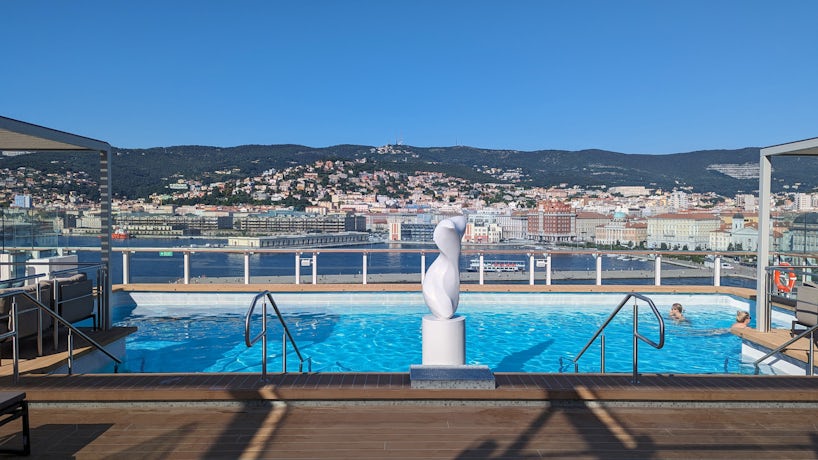
8 Eastern Mediterranean Cruise Tips You Should Know Before You Book



The Eastern Mediterranean is increasingly one of the most popular cruise destinations in Europe. Its blend of ancient histories and antiquities, beautiful beaches and charming villages offers a fantastic array of holiday options.
Bear in mind that these are port-intensive cruises with many shore excursion options and plenty of things to do. Doing extensive research on each potential port of call will be crucial in selecting the right cruise for yous. With dozens of cruise lines operating in these waters and multiple options in the same price range, you will have to make hard choices.
To help you with this daunting task, we have put together a list with our top eight Eastern Mediterranean cruise tips below if you’re heading east. Read on to better understand where to start before booking.
1. Pick the Right Time to Cruise the Eastern Mediterranean
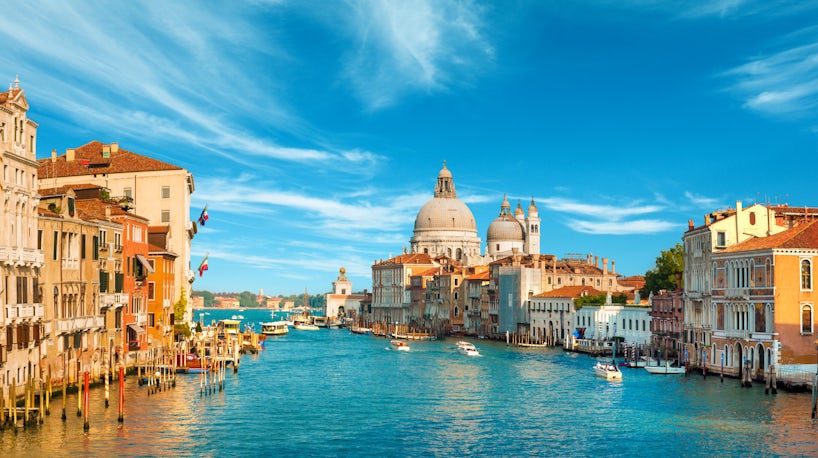
Generally speaking, most Eastern Mediterranean cruises set sail from spring through fall, with the summer high season hosting the largest number of sailings and people. (Prices are also generally higher, due to demand.) Summer's also the time when the region gets hot. Spring and fall offer lower temperatures, better cruise deals and fewer crowds.
Winter cruising in the Mediterranean has become more popular, particularly on European lines, because sunny skies predominate and temperatures are moderate, ranging from the 50s to 70s instead of the 80s and higher. You won't have to jostle with peak-season crowds, cruise lines feature longer itineraries with more leisurely schedules, and prices offer more value for your money.
2. Understand the Differences Between Cruise Lines Before Booking Your Eastern Mediterranean Cruise
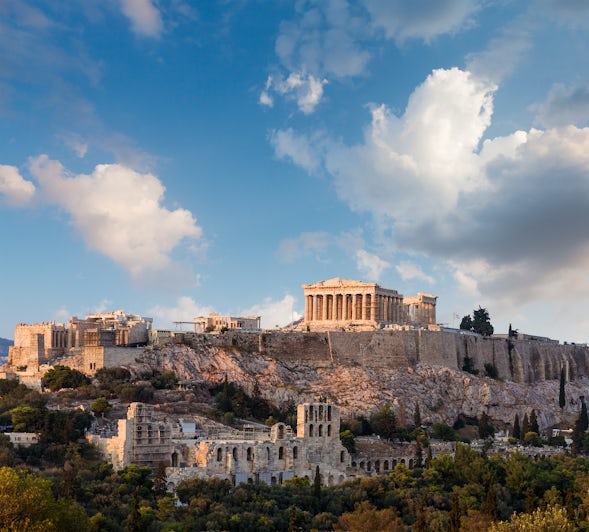
When sailing the Eastern Mediterranean, cruisers are spoiled for choice. Big ships tend to visit the "greatest hits" of Eastern Mediterranean destinations, such as Venice, Athens and Istanbul. Almost all major lines offer such sailings, including Celebrity, Holland America, Princess, Royal Caribbean and Disney.
For a more European feel, consider cruising the region with a company based on the continent, such as Costa and MSC Cruises. British lines P&O and Cunard have numerous sailings, while Celestyal Cruises offers both short and long cruises around the Med.
Luxury vessels also ply this region of the Med, including Regent Seven Seas, Azamara, Hapag-Lloyd, Crystal, Silversea, Oceania and Seabourn. These voyages not only often visit smaller ports like Hvar, Split, Mykonos, Santorini and Cyprus, but they're longer in duration, also traveling to the Western Mediterranean.
The expedition ships that visit this well-trafficked region tend to be those that are heavy on culture, such as Ponant. Those in search of something different can opt for a small ship (Grand Circle), or all-masted ships like Lindblad's Sea Cloud or the ships found in Star Clippers' fleet. Variety, SeaDream Yacht Club and Windstar have yacht-style sailings.
3. Not All Eastern Mediterranean Itineraries Are the Same, So Familiarize Yourself with Your Options Before Booking

As a cruise region, the Eastern Mediterranean encompasses a broad range of territories that include the Adriatic coast of Italy and Croatia, Eastern Sicily, Malta, the Greek Islands, and Turkey's Istanbul, Izmir and Kusadasi. Some cruises dip down into Cyprus, Israel and -- when it's safe enough to do so -- Egypt as well.
The cornerstone ports for most Eastern Mediterranean voyages are the cities of Athens (served by the port of Piraeus), Venice (or Venice-adjacent ports), and Istanbul. In other instances, cruise lines mix a bit of the Western Mediterranean with the Eastern, and may start or end voyages in Rome (served by Civitavecchia), Barcelona or Genoa.
Most itineraries offer a combination of history, culture and beaches, making it easy to cater to a variety of interests and the amount of vacation time you have. However, it's also possible to find itineraries that are more focused on one or the other.
You should not only study up on potential regions and itinerary focuses prior to booking, but also potential ports of call. These are some of the most common ports on Eastern Mediterranean cruises:
Athens, Greece. The Grecian capital city was the epicenter of the world's art and culture scene in the 4th and 5th centuries B.C., and much of its rich history is still on display today. Storied monuments from the city's Golden Age -- such as the Acropolis and the Odeon of Herod Atticus -- are must-sees, as are significant museums like the National Archeological Museum.
Corfu, Greece. The island of Corfu (Kerkyra in Greek) has everything one would expect of a great Greek holiday: a rich architectural tradition, a strong cultural presence and ample opportunity to sample moussaka and dolmades. Most visitors head first to Corfu Town, a walled city that's framed by two hillside fortresses, one dating back to the sixth century.
Dubrovnik, Croatia. Dubrovnik is a great walking city for lovers of culture and history, with centuries-old monasteries, churches, synagogues and even one of the oldest operating pharmacies in Europe. Medieval-era Old Town is a walled city that's free of traffic; you can even walk the 1.3-mile stretch of wall some 80 feet above ground level for spectacular views.
Istanbul, Turkey. The world's only city covering two continents, Istanbul is a place where East and West mingle, with monumental churches cum mosques, Roman ruins and unadulterated symbols of consumerism. Most ships offer two-day visits.
Jerusalem (Ashdod), Israel. To visit Jerusalem, many ships call on Ashdod, more than an hour's drive from the city. Hectic, don't-waste-a-minute tours rush visitors to the Western Wall, Via Dolorosa, the Church of the Holy Sepulcher and then on to Bethlehem or one of Israel's famous.
Kusadasi, Turkey. Ephesus, which is about nine miles from town, is one of the best-preserved ancient cities in the Eastern Mediterranean. The two-story library once contained thousands of scrolls, and the Terrace Houses display intricate mosaics and colorful frescoes. The Temple of Artemis was one of the seven wonders of the ancient world.
Mykonos, Greece. Windswept Mykonos boasts some 20 spots for sunbathing and swimming, several with a clothing optional emphasis in line with the island's reputation for an open, cosmopolitan atmosphere. If your ship stops overnight, Mykonos' nightlife is among the hottest in Europe.
Santorini, Greece. Site of one of the world's most violent volcanic eruptions around 1450 B.C., the island is inarguably the most scenically dramatic of all the Greek Islands. Expect pitch-black beaches, rugged landscapes and a stunning caldera (volcanic crater), along with whitewashed churches and charming cliff top houses.
Venice, Italy. Few cities come remotely close to matching Venice in terms of sheer beauty and romance. Aside from a number of charming squares, Venice is mostly composed of a warren of narrow canals and streets spread over more than 100 islands. There are few better cities to simply get lost in.
Note: Since 2021, large cruise ships have been banned from entering the Vanice lagoon, forcing some cruise lines to relocate their port of call to Ravena and other nearby cities. If you don’t want to spend up to several hours on the road going from the port to Venice and back, make sure your ship will actually be mooring in the city center.
4. Cover Up in Churches and Other Religious Sites in the Eastern Mediterranean
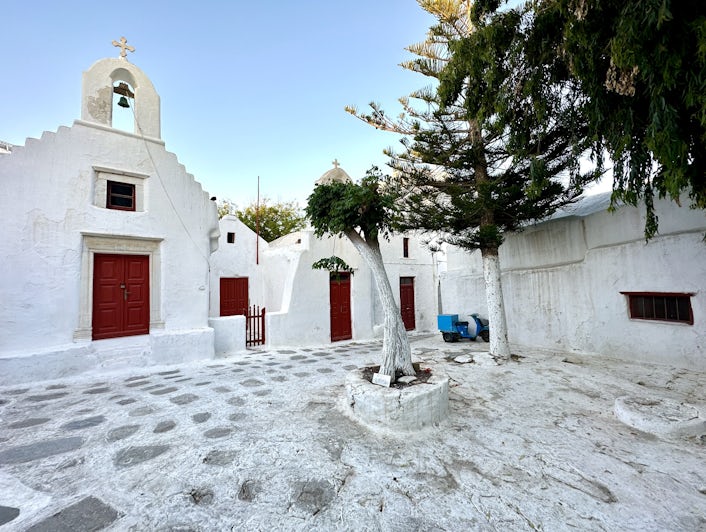
While some beaches in Greece and Turkey might be clothing-optional, Orthodox churches, synagogues and mosques usually enforce strict dress codes. Catholic churches are somewhat more relaxed when it comes to clothing, but visitors are often expected to cover their shoulders, midriff and knees.
Some tourist sites do offer shawls for those with bare shoulders, but it’s always better to bring your own -- and leave your shorts onboard.
5. Stay Hydrated and Protected from the Sun While You Cruise the Eastern Mediterranean
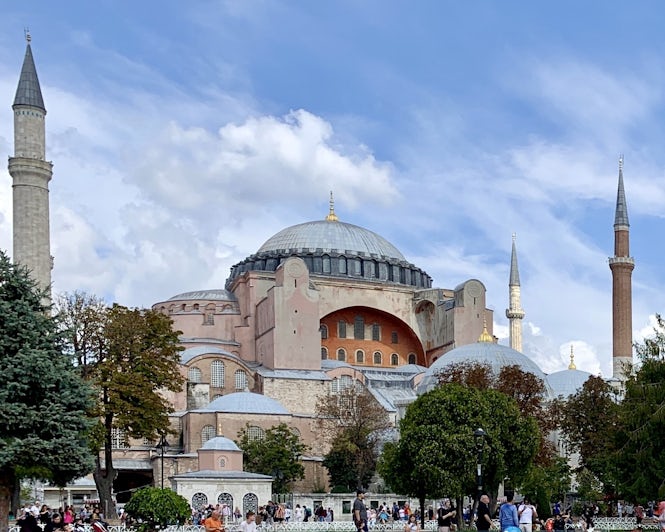
The sun can be brutal in the Med during the heat of summer. Bring plenty of bottled water, and hydrate frequently. Most cities will have public fountains, but make sure you research tap water in each place you’ll be visiting, as some will be gentler on your stomach than others.
Other items you should pack when visiting the Eastern Mediterranean are sunscreen and hats.
6. Leave Your Flats, Sandals and Flip-Flops Onboard in the Eastern Mediterranean
The terrain at ancient sites like Ephesus, the Parthenon and Jerusalem can be dusty and uneven. But even if you’re visiting large towns of cities with nicely paved sidewalks, you'll want shoes with some traction. Leave your flimsy footwear on the ship and bring sneakers made of breathable materials.
7. Take It Easy on Sea Days While Cruising the Eastern Mediterranean
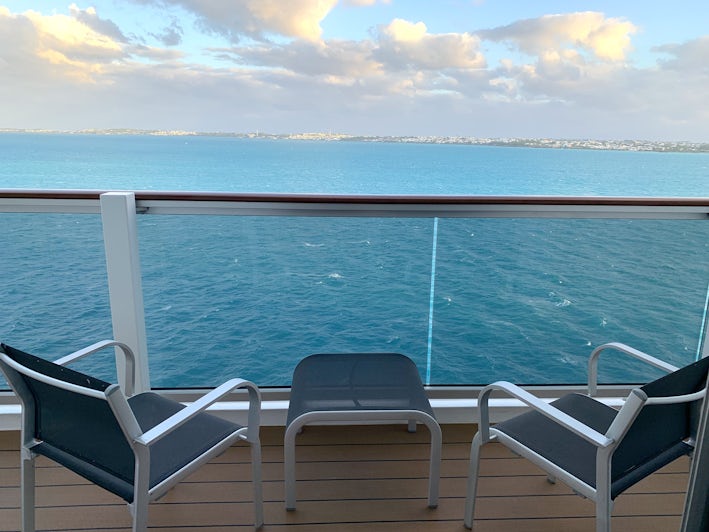
You could spend days exploring major cities like Istanbul, Venice, Athens and Jerusalem; even the smaller ports like Dubrovnik and Valletta are jam-packed with must-see monuments. If you're the type who wants to do it all, make sure you take it easy on sea days and in the evening to recuperate.
Booking a spa appointment, watching a movie in your cabin instead of hitting the nightclub, or skipping the ports you’re least interested in visiting are some of the best ways to relax on a port-intensive cruise.
8. Be Prepared for Itinerary Changes in the Eastern Mediterranean

Most cruisers traveling to the Caribbean during hurricane season are ready for itinerary changes. However, swaps can (and do) happen in all other regions of the world. Reasons can go from bad weather to unrest. In the Eastern Mediterranean, cruises that call at Israel, Egypt and Turkey may change if the geopolitical situation becomes volatile; Italy cruises are more likely to be impacted by storms, even in the summer.
Be flexible and enjoy the alternative ports. The region is full of gorgeous cities and islands, and while you may be looking forward to visiting Haifa, Cairo, Jerusalem or Istanbul, you’ll end up discovering new fascinating places steeped in history and charm.